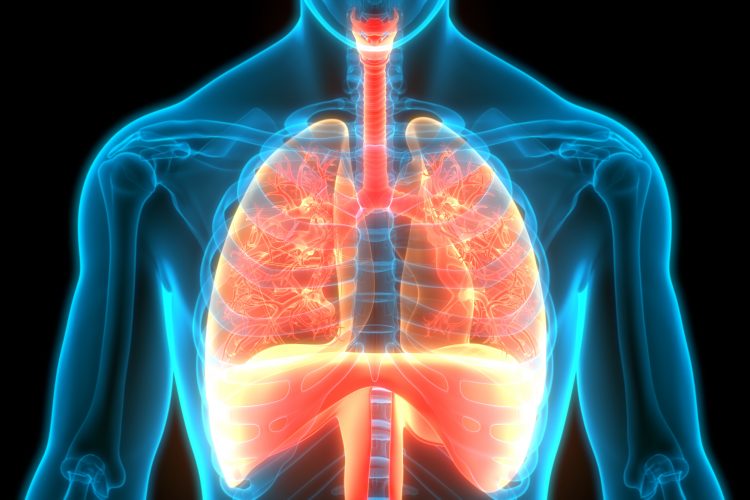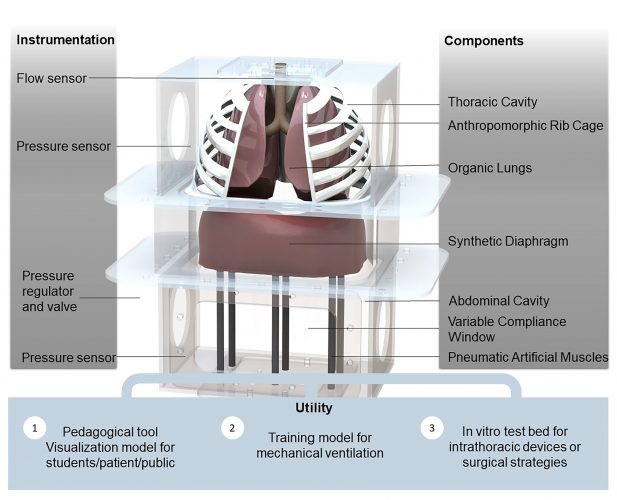Researchers develop a novel respiratory system simulator
Posted: 10 June 2020 | Hannah Balfour (Drug Target Review) | No comments yet
Scientists reveal their reliable and tuneable simulator created using swine lungs, synthetic actuators and artificial muscles.


Researchers have developed a novel respiratory system simulator for the study of respiration and complex pulmonary conditions.
According to the scientists, benchtop tools for studying the respiratory system misrepresent the interdependence between the diaphragm, abdomen and lungs. Meanwhile, computational models hide the mechanisms in a black box computation, so do not provide a clear representation of the process.
To enable students and researchers to better understand respiratory mechanisms and develop embeddable medical devices, researchers created a high-fidelity respiratory simulator that accurately represents the interplay between the abdomen, diaphragm, lungs and pleural space.


A computational rendering of the biohybrid respiratory simulator shows the modular device, including organic swine lungs, artificial muscles and a diaphragm made of thermoplastic and elastomeric materials. It was built to accurately replicate respiratory mechanics and precisely track pressure, flow and volume to test innovative medical implants and replicate changes in the system introduced by disease or ventilator use [Credit: Ellen Roche et al.].
Study author, Ellen Roche, explained that the model they created uses swine lungs, soft synthetic actuators and artificial muscles. The result is a reliable, tuneable system with a deterministic motion. Precise tuning of pressure in each part of the system allows researchers to explore specific disease conditions and show how even minor changes affect overall respiratory function.
For example, the model was successfully used to test three types of pneumothorax, when air enters the pleural space, and obstructive lung disease by increasing flow resistance in the airway. The authors also tested a patch for repairing lung punctures and showed the system of sensors measuring flow, volume and pressure in the model is able to precisely measure airway pressure and pleural pressure.
The model, which is completely modular with parts that can be removed or replaced, also proved extremely useful for testing ventilator-only respiration by removing the elastomeric diaphragm.
“We are currently using it as a realistic testbed to test different ventilator options that have been developed for the COVID-19 pandemic,” Roche said.
The authors plan to add cardiovascular components to their model to further increase its usability to study complex problems involving respiratory and cardiovascular systems.
The paper was published in APL Bioengineering.
Related topics
Disease Research, Drug Development, Drug Targets, Research & Development, Structural Biology, Technology
Related people
Ellen Roche








